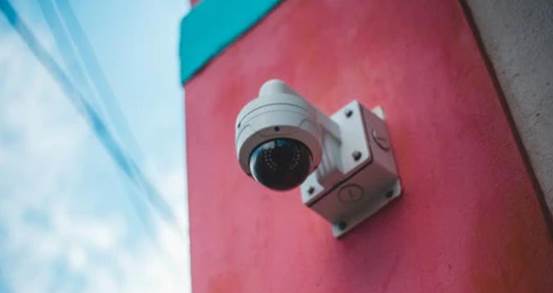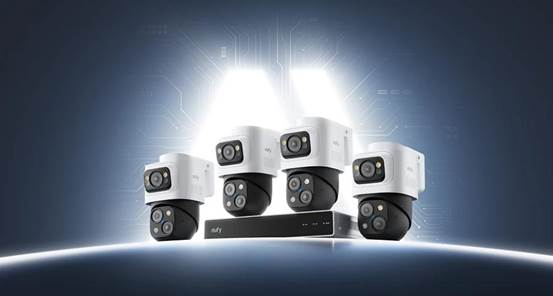Huawei
users can sync Gmail and Google Maps effortlessly, even without relying on
Google Play. Through smart system integration and the use of alternative
frameworks like microG, HarmonyOS supports both mail synchronization and
navigation functions securely. Gmail works with real-time syncing, and Maps
delivers accurate GPS tracking and route guidance. Huawei’s software design,
combined with cloud-based authentication and AI optimization, ensures these
apps perform as efficiently as they do on any other Android device. This
article explains the process, the supporting technology, and why Huawei users
can confidently use Gmail and Maps without needing Google Play.

How Gmail
Syncs Seamlessly on Huawei Devices?
Huawei
users can access and sync Gmail easily through account integration, background
permissions, and intelligent HarmonyOS resource management.
Setting Up
Gmail With Account Synchronization
To
connect Gmail, Huawei users open “Settings” > “Users & accounts” >
“Add account.” By selecting “Google” through frameworks like microG or
compatible login services, users can authenticate using secure token-based
credentials. Once completed, Gmail automatically syncs emails, labels, and
folders through Huawei’s built-in synchronization engine. HarmonyOS handles
synchronization at the system level, ensuring messages appear instantly in the
Gmail app or any email client connected to the same account. Huawei’s cloud
scheduler runs in the background, maintaining constant connectivity between
Gmail servers and the device. This setup provides a stable and efficient
environment for managing personal or business correspondence without the need
for extra installations.
Managing
Background Permissions for Real-Time Updates
To
guarantee Gmail updates continuously, Huawei users enable background activity
in “Settings” > “Battery” > “App launch.” Locate the Gmail app or microG
Services Core, disable “Manage automatically,” and allow “Auto-launch,”
“Secondary launch,” and “Run in background.” This ensures that Huawei’s system
does not limit Gmail’s ability to receive push notifications or sync data. The
AI battery manager recognizes Gmail as a high-priority app, giving it constant
access to network resources while maintaining energy efficiency. Every incoming
email triggers instant notification delivery, allowing users to respond
immediately — all made possible by HarmonyOS’s intelligent process handling.
Using Huawei’s
Native Mail and Cloud Integration
For
users who prefer system-level mail management, Huawei’s native Mail app can
also connect directly to Gmail servers. By adding the account using IMAP or
OAuth authentication, the app fetches emails in real time while maintaining
Gmail’s folder structure and labeling system. HarmonyOS secures this process
using encryption between the Mail app and Gmail’s cloud servers. This setup
allows users to check mail, compose messages, and access attachments directly
from Huawei’s built-in apps. Calendar invites and contacts sync automatically
through the same connection, creating a unified ecosystem where Gmail blends
naturally with Huawei’s user experience — fast, secure, and always up to date.
How Google
Maps Works Smoothly Without Play?
Huawei
devices handle location-based services efficiently without Google Play by
combining HarmonyOS’s GPS optimization, network coordination, and frameworks
such as microG.
Activating
Maps With microG Location Services
Huawei
users can access Google Maps by installing a verified version from a trusted
source and linking it with microG’s framework. Once installed, open “microG
Settings” > “Location modules” and enable “Mozilla Location Service” and
“Nominatim.” These modules connect to global Wi-Fi and cellular databases to
determine accurate positions. HarmonyOS immediately integrates this
configuration with its GPS hardware, ensuring high-precision tracking. Whether
walking, driving, or exploring new places, Maps identifies the user’s exact
location in seconds. The system intelligently switches between GPS, Wi-Fi, and
mobile networks to maintain stable navigation performance. This approach allows
users to enjoy real-time location accuracy and smooth route rendering.
Navigating
With AI-Assisted System Optimization
When
users open Maps for navigation, HarmonyOS automatically prioritizes
performance. It enhances processor speed, screen refresh rate, and network
stability, ensuring Maps runs flawlessly even during extended trips. The AI
engine monitors usage patterns and allocates resources dynamically, giving Maps
continuous access to location updates and route recalculations. When a user
changes direction or takes a detour, Huawei’s network engine communicates
quickly with mapping servers to update the route instantly. Voice guidance
operates smoothly through Huawei’s audio system, while the system ensures
minimal battery drain through adaptive power allocation.
Syncing
Favorites, Search History, and Offline Maps
Huawei
devices also allow users to sync saved locations and offline data through
account integration. After logging into Google Maps via microG or compatible
frameworks, the app connects securely to the user’s account and retrieves “Your
places,” recent routes, and starred locations. HarmonyOS schedules background
synchronization during periods of strong connectivity, ensuring updates happen
without manual refresh. Users can download entire regions for offline access —
perfect for travel or low-signal environments. The downloaded data is stored in
Huawei’s encrypted file system, and the system automatically updates these maps
when connected to Wi-Fi. This seamless synchronization maintains both
convenience and safety while maximizing local storage efficiency.

Why Huawei’s
System Excels at App Integration
Huawei’s
ecosystem is built to balance flexibility, performance, and security. Its
ability to run apps like Gmail and Maps without Play stems from the strong
foundation of HarmonyOS and Huawei Mobile Services (HMS).
HarmonyOS
Architecture and App Compatibility
HarmonyOS
operates as a distributed operating system, allowing apps to function across
phones, tablets, and even vehicles with minimal modification. When users run
Gmail or Maps through microG or other frameworks, HarmonyOS automatically
adapts the apps’ API requests to compatible Huawei services. This means Gmail’s
sync functions and Maps’ GPS operations are fully recognized by Huawei’s system
layers. HarmonyOS handles background threads efficiently, preventing delays in
notifications or map rendering. The architecture’s flexibility ensures that
even Google-dependent applications perform optimally within Huawei’s
environment — a major achievement in software compatibility.
System-Level
Security and Encrypted Communication
Huawei’s
system is designed with multilayered security that protects user data while
enabling third-party service access. Each app, including Gmail and Maps, runs
in an isolated sandbox to prevent data sharing between processes. When Gmail
syncs emails or Maps retrieves routes, HarmonyOS encrypts all communications
through its network layer using TLS protocols. Huawei’s built-in AI firewall
verifies every connection, ensuring the process remains safe and private. This
security foundation allows Huawei users to connect their Google accounts
confidently while maintaining complete control over privacy.
AI
Optimization for Performance and Battery Efficiency
HarmonyOS’s
AI Engine constantly learns how users interact with their devices. It optimizes
resource allocation to ensure apps like Gmail and Maps remain responsive
without consuming unnecessary power. When users check mail, Huawei’s AI assigns
a higher CPU priority for faster rendering. During navigation, it dynamically
adjusts brightness, GPS frequency, and processor usage to balance energy
efficiency and real-time performance. These optimizations make Huawei’s system
one of the most reliable environments for productivity and navigation,
delivering both speed and endurance — even during heavy use.
Conclusion
Huawei
users can confidently sync Gmail and use Google Maps without Google Play
through smart alternatives like microG and HarmonyOS’s integrated framework. HarmonyOS’s
secure architecture, AI optimization, and adaptive network management ensure
apps run smoothly, providing an experience nearly identical to traditional
Android devices. Users can access mail, view attachments, navigate, and manage
their Google accounts easily within Huawei’s trusted environment. With huawei google play alternatives optimized through
innovation and intelligent engineering, Huawei continues to prove that its
ecosystem delivers convenience, speed, and reliability — all without
compromise.
